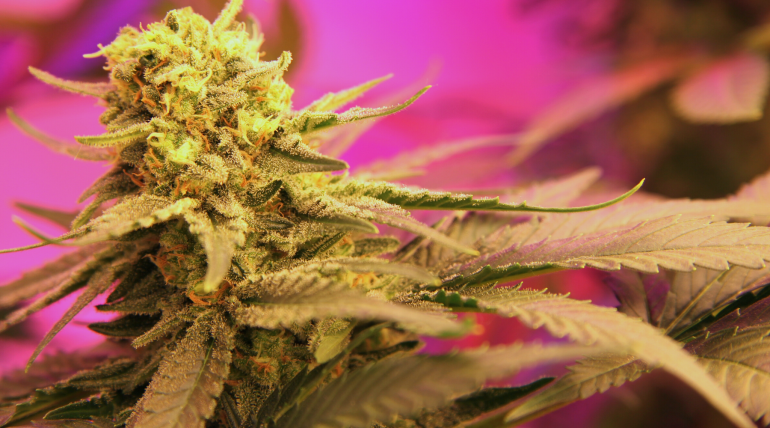According to a survey across Europe, up to 100 million people suffer from chronic pain. In the UK alone, about 28 million people suffer from this medical condition. Over 62% of this ‘suffering’ population are aged 75 and above. In Canada, about 19% of the populations above 18 years of age suffer from chronic pain.
Unlike acute pain which is felt over a short while, chronic pain is felt for a significantly longer period of time. It is felt for a period of 12 weeks or more. It therefore has an impact on the quality of life the patient lives and affects other aspects of their lives. The severity of the pain can range from a mild pain to a very agonizing pain. It can also come in different forms like soreness, stinging, dull aches, burning sensation etc.
It is possible to develop chronic pain after an injury or a medical condition, even after it has been treated. It is often related to medical conditions like fibromyalgia, back injury, cancer, past surgery, migraine, infections, HIV/AIDS, and arthritis. Chronic pain in the body can develop gradually over a period of time or it can just come up suddenly. What is certain is, you can feel it anywhere in your body if it’s present.
According to a recent study in 2019 in the US, about 67% of medical cannabis users mentioned pain as their qualifying condition. Thanks to recent advancement in medical research and the lifting of the prohibitions on cannabis, there are now clinical evidences to show that medical cannabis helps to cure different types of chronic pain. Many medical studies show that cannabis is effective for treating chronic pain from migraine, fibromyalgia, arthritis etc. Many other types of chronic pain from cancer, multiple sclerosis, neuropathy and others are also well managed by cannabis.
Symptoms of Chronic Pain
There are no precise symptoms of chronic pain except the pain which you already feel. You know you have chronic pain when you feel an ongoing discomfort or pain in your body and it lasts for 3 months, 6 months or longer than that. If the cause and origin of the pain is unknown, it is called chronic pain syndrome (CPS).
There are some secondary symptoms that may be associated with chronic pain syndrome alongside the unexplained pain that you feel. These secondary symptoms are:
• Anxiety and depression: This is caused by fear of the pain or the consequences that the pain might bring.
• Insomnia: The one suffering from chronic pain is unable to sleep because the pain keeps them awake.
• A lack of interest in intimate activities like sex.
• Feeling of guilt: This prevents you from going about your daily life normally as you’re unable to explain the pain that you’re feeling.
• Stress and irritability: You become very irritable and easily stressed out because of the constant pain that you feel in your body.
• Muscle pains and fatigue
It’s important that you see a doctor when you’ve been feeling pains for a period of 12 weeks or more. This is especially if the pain isn’t reducing and/or is getting intense and you can’t give a reason for it. They are more equipped to help you determine the cause of the pain. Apart from this, they can help you with everything you need to relieve the pain and give you the resources to help you cope with chronic pain.
What Causes Chronic Pain?
The cause of chronic pain is still very relatively unknown. Many researchers think that there’s a possibility that chronic pain is a learned response. This implies that the pain that the ‘sufferer’ feels was first caused by a physical or medical problem. But even after removing the cause of the pain, the brain continued sending the same pain signals to your body. Researchers also think that people that suffer from chronic pain syndrome (CPS) might react to stress differently from others. This differing reaction to stress might be the reason why they feel pain.
There are many other conditions or incidents that may provoke chronic pain in the body. They include:
• Fibromyalgia: A neurological condition that causes tenderness and pain in different parts of the body, called trigger point.
• Rheumatoid arthritis: An autoimmune disease that brings about inflammation in the joints.
• Osteoarthritis: A type of arthritis that is caused by wear and tear in the body. It occurs when the cartilage between the bones starts to wear away.
• Headaches and back pain: Back pain may be a result of nerve compression, muscle strain or spinal stenosis.
• Irritable bowel syndrome (IBS) or inflammatory bowel disease (IBD): IBD results in chronic inflammation of the digestive tract. This can also cause cramping and intestinal pain.
Other medical conditions that can cause chronic pain are:
• Nerve damage
• Cancer
• Endometriosis
• Stomach ulcers and acid reflux
• Broken bones and sprained muscles that still cause pain even after they have healed.
• Infectious etiologies like Lyme disease and herpes infections.
Chronic pain also correlates with the early stages of other chronic health conditions like diabetes, heart disease, cerebrovascular disease, and hypertension.
Risk Factor for Chronic Pain
According to research, there are risk factors that make people that are more susceptible to chronic pain than others. These factors are:
• Depression: Scientists believe that depression can affect the manner in which the brain receives and interprets signals from the central nervous system.
• Serious medical condition: People with medical conditions like arthritis are more prone to chronic pain than others.
• Smoking: People with chronic pain disorders like arthritis and fibromyalgia tend to feel more pain if they also smoke. Experts don’t know why yet, but smoking has the tendency to increase the pain.
• Obesity: According to a report, 50% of the people that are treated for obesity also complain of pains in their body. This might be due to the complex metabolism and interplay of the obesity with hormones in the body. It could also be due to stress caused by the extra weight.
• Females: Hormonal difference and other difference in the male and female nerve fibers may be the reason why females are more sensitive to pain than males.
• Old age: Old age comes with susceptibility to different medical conditions that can cause chronic pain
How Does Cannabis Work?
It was in the 1990s that scientists and doctors only began to understand the interaction of cannabis with the body. That was when researchers discovered that human body naturally produces cannabinoids (which are chemical compounds found in cannabis, like THC and CBD). The cannabinoids produced by the body are called endocannabinoids. While the ones produced by the cannabis plants are called phytocannabinoids.
Thereafter, scientists were able to map out a whole system of receptors that only react to cannabinoids in the body. This system of receptor is known as the endocannabinoid system. It reacts to both endocannabinoids and phytocannabinoids found in the human body.
Medical researchers have also discovered down the years that the endocannabinoid system plays an important role in the regulation of certain functions in the body. Mood, learning and memory, sleep, metabolism and immunity (pain) are some of the functions the endocannabinoid system helps to regulate.
Two major types of pain in the body are nociceptive pain and neuropathic pain. Nociceptive pain is caused by physical harm to the body, like a burn. While neuropathic pain is caused by damage to the nerves that carry pain signals. Endocannabinoid receptors play a key role in how the body regulates and perceives these two types of pain.
Researchers have discovered endocannabinoid receptors in almost all the parts of the pain pathway and in different parts of the peripheral and central nervous system. Other cannabinoid receptors play their role in the reduction and regulation of inflammatory pain in the body.
Medical Studies into Cannabis and Chronic Pain
A number of studies have been carried out to determine if cannabis and cannabinoids are really effective for treating chronic pain.
• According to a review of 32 studies in Australia, cannabinoids can cure pain and muscle spasticity caused by multiple sclerosis.
• A study revealed that medical marijuana relieved 26 fibromyalgia patients of pain. 50% of the patients stopped taking medicines for fibromyalgia but there were mild side effects in about 30% of the patients.
• There was a study in 2010 on cancer pain that didn’t respond to the normal opioid medication. They discovered that another treatment which had both CBD and THC in it resulted in a huge pain relief. 43% of the trial subjects in this study reported an improvement of 30% or more. This result indicates that drugs that have multiple cannabinoids in them have the possibility of being more effective than others that have isolated active ingredients.
• A study was carried out in 2016 to examine the benefits of medical cannabis for people that have different types of chronic pain that are resistant to treatment. The researchers discovered that, apart from reducing pain, cannabis also reduced the number of people using prescription opioid medications.
• Another study in 2016 examined the use of medical cannabis in patients that suffer chronic migraine headaches. The average migraines per month dropped from 10.4 to 4.6. More than 85% of the patients claimed to have suffered fewer migraines.
Although, it is imperative that more clinical trials are carried out on the effectiveness of cannabis for treating chronic pain. There are already enough scientific evidences to prove that cannabis is an effective medical option. The fact that it has a low side-effect profile means that it already is an attractive option.
Side Effects of Cannabis for Chronic Pain
All the positivity around cannabis is definitely worth it. Many of the researches have concluded that it is effective for treating chronic pain. Even cases that didn’t respond to the conventional treatment method were treated by cannabis. However, this doesn’t mean that it doesn’t have its own downside to it.
The cannabinoid THC is an active therapeutic ingredient for treating chronic pain. But it is also psychotropic and can cause cognitive side effects like impaired memory, euphoria and anxiety.
There’s also the possibility that it might trigger psychosis in many of the users. But other preparations that are rich in CBD, like CBD oil do not intoxicate like THC-rich products.
There are a few other side effects that may be caused by cannabis-based treatment. These side effects include dry mouth, dry eyes, fatigue, changes in appetite, and drowsiness.
These side effects of cannabis-based treatment are however not very strong. This makes cannabis a safe substance to use for the patients. In fact, if you compare cannabis and its side effects to those of many other pharmaceutical drugs prescribed for pain treatment, you’ll realize that cannabis is a lot safer to use. As it stands, there currently are no verified deaths caused by the use of cannabis.
It is a good idea to meet with your doctor first if you’re already considering switching to the use of cannabis for treating chronic pain and other medical issues.
Other Treatment of Chronic Pain
It is important to be able to treat chronic pain as soon as it arises. This is especially because of the disabling symptoms it causes, its correlation with other serious medical conditions and how it affects the quality of life people live.
It is very difficult to completely cure chronic pain but with proper treatment, it is possible to manage it well. There is no one-size-fits-all treatment for chronic pain.
There are different ways and techniques adopted to treat chronic pain in different people. But most often, what works best is a combination of different therapies. It is best to personalize treatment depending on the sufferer and the specific pain that is suffered.
The different treatments that people use to manage pain relief include:
This is usually the first step most people take when they feel chronic pain. But that doesn’t make it the ideal solution to the problem. There’s a risk of dependence or addiction to the pain medication. Cannabis on the other hand, has a low risk of fatal overdose and addiction. This can cause you to seek out stronger and more addictive pain killers. It also doesn’t tackle the root of the problem, which is the cause of the pain.
As a matter of fact, taking antidepressants, muscle relaxants and anti-seizure drugs can help you to control chronic pain better than pain medications or pain killers.
Antidepressants can increase neurotransmitters like dopamine, norepinephrine, and serotonin. These help to reduce the pain and increase your mood. There are different types of antidepressants. There are SNRIs (serotonin-norepinephrine reuptake inhibitors), SSRIs (selective serotonin reuptake inhibitors) and tricyclic antidepressants. The SNRIs and tricyclic antidepressants are more often used for pain. The side effects include weight gain, nausea and insomnia.
Antiseizure drugs are mainly used for conditions liked bipolar disorder and epilepsy, but they also work for chronic pain. These drugs block the transmission between nerve cells thereby reducing pain. Side effects are fatigue, drowsiness, nausea, increase clumsiness and high irritability.
Anti-anxiety drugs don’t directly reduce pain but they make it easier to manage the pain by improving your sleep and relaxation. Side effects are insomnia, headaches, nausea and restlessness.
Muscle relaxants help to relieve the muscle thereby relieving the pain. Side effects are confusion, headaches, dizziness and depression.
The best way to combat chronic pain is actually to do some exercise. It is ironic because chronic pain can make movement difficult but it works. The body’s natural pain reliever is endorphins and they’re released during exercise.
This will also help boost your mood. But lying in bed makes you weaker and increases the pain. Stress plays a huge role in chronic pain and exercise also reduces stress. It also helps to improve sleep, just like antidepressants.
There are some foods, vitamins, and supplements that help to reduce the pain symptom while some other foods make it worse. Cheese and red wine are some food that can cause severe headaches and migraines.
Although science doesn’t prove it, many people claim that some natural remedies like glucosamine, chondroitin sulphate, and omega-3 & omega-6 fish oil supplements help to relieve their chronic pain.
People undergo different types of alternative therapies to help ease chronic pain in their bodies. Common alternative therapies people undergo are TENS therapy, acupuncture, deep breathing exercise, meditation, biofeedback, and mindfulness.
Many people claim that these treatments are effective against chronic pain. All of these alternative therapies are inexpensive and can be done in your house.
Taking pain-killing medication isn’t the best way to combat chronic pain. It doesn’t deal with the cause of the pain and it has an addictive tendency.
On the other hand, cannabis and cannabis-based drugs are very effective against chronic pain and have milder side effects that can be dealt with easily. The choice should be pretty obvious.
However, since the best way to deal with chronic pain is by combining therapies, it would be good advice to combine cannabis with other effective treatment options like exercising and alternative therapy.







